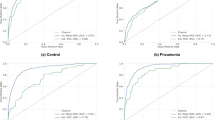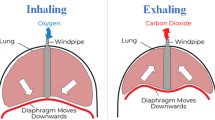Abstract
Despite the general success of employing artificial intelligence (AI) to help radiologists perform computer-aided patient diagnosis, creating good models with tiny datasets at different sites is still tough. Medical image analysis is crucial for the quick and precise detection of lung disease and helps clinicians treat patients effectively while averting more fatalities. This is why real-time medical data management is becoming essential in the healthcare industry, especially for systems that monitor patients from a distance. To overcome this challenge, we propose a different approach by utilizing a relatively new learning framework. Individual sites may jointly train a global model using this approach, referred to as federated learning. Without explicitly sharing datasets, federated learning combines training results from various sites to produce a global model. This makes sure that patient confidentiality is upheld across all sites. Additionally, the additional supervision gained from partner sites’ results enhances the global model’s overall detection capabilities. This study’s primary goal is to determine how the federated learning (FL) approach may offer a machine learning average model that is robust, accurate, and unbiased in detecting lung disorders. For this aim, we analyze 325 Lung Sound audio recordings collected from https://data.mendeley.com/ and, transform this audio signal into Melspectrograms. Once the labeling and preprocessing steps were carried out, a Convolutional Neural Network (CNN)(FederatedNet) model was used to classify the respiratory sounds into healthy and unhealthy. We achieved the result of almost 88% validation accuracy. Furthermore, this paper discusses the application of FL and its overview. Lastly, we discuss the main challenges to federated learning adoption and potential future benefits.
Access this chapter
Tax calculation will be finalised at checkout
Purchases are for personal use only
Similar content being viewed by others
References
Hill, P.: The rationale for learning communities and learning community models (1985)
Min, X., Bin, Yu., Wang, F.: Predictive modeling of the hospital readmission risk from patients’ claims data using machine learning: a case study on COPD. Sci. Rep. 9(1), 1–10 (2019)
Perez, M.V., et al.: Large-scale assessment of a smartwatch to identify atrial fibrillation. N. Engl. J. Med. 381(20), 1909–1917 (2019)
Gostin, L.O.: National health information privacy: regulations under the Health Insurance Portability and Accountability Act. JAMA 285(23), 3015–3021 (2001)
LeCun, Y., Bengio, Y., Hinton, G.: Deep learning. Nature 521(7553), 436–444 (2015)
Mamun, M., et al.: Heart failure survival prediction using machine learning algorithm: am I safe from heart failure? In: 2022 IEEE World AI IoT Congress (AIIoT). IEEE (2022)
Mamun, M., et al.: Lung cancer prediction model using ensemble learning techniques and a systematic review analysis. In: 2022 IEEE World AI IoT Congress (AIIoT). IEEE (2022)
Bakas, S., et al.: Advancing the cancer genome atlas glioma MRI collections with expert segmentation labels and radiomic features. Sci. Data 4(1), 1–13 (2017)
Antunes, R.S., et al.: Federated learning for healthcare: systematic review and architecture proposal. ACM Trans. Intell. Syst. Technol. (TIST) 13(4), 1–23 (2022)
Li, W., et al.: Privacy-preserving federated brain tumour segmentation. In: Suk, H.-I., Liu, M., Yan, P., Lian, C. (eds.) MLMI 2019. LNCS, vol. 11861, pp. 133–141. Springer, Cham (2019). https://doi.org/10.1007/978-3-030-32692-0_16
Konečný, J., et al.: Federated learning: strategies for improving communication efficiency. arXiv preprint arXiv:1610.05492 (2016)
Li, X., et al.: Diagnosis of thyroid cancer using deep convolutional neural network models applied to sonographic images: a retrospective, multicohort, diagnostic study. Lancet Oncol. 20(2), 193–201 (2019)
Ng, D., et al.: Federated learning: a collaborative effort to achieve better medical imaging models for individual sites that have small labelled datasets. Quant. Imaging Med. Surg. 11(2), 852 (2021)
Lee, J., et al.: Privacy-preserving patient similarity learning in a federated environment: development and analysis. JMIR Med. Inform. 6(2), e7744 (2018)
Kim, Y., et al.: Federated tensor factorization for computational phenotyping. In: Proceedings of the 23rd ACM SIGKDD International Conference on Knowledge Discovery and Data Mining (2017)
Liu, D., Dligach, D., Miller, T.: Two-stage federated phenotyping and patient representation learning. In: Proceedings of the Conference. Association for Computational Linguistics. Meeting, vol. 2019. NIH Public Access (2019)
Huang, L., et al.: Patient clustering improves efficiency of federated machine learning to predict mortality and hospital stay time using distributed electronic medical records. J. Biomed. Inform. 99, 103291 (2019)
Brisimi, T.S., et al.: Federated learning of predictive models from federated electronic health records. Int. J. Med. Inform. 112, 59–67 (2018)
Cortes, C., Vapnik, V.: Support-vector networks. Mach. Learn. 20(3), 273–297 (1995)
Dayan, I., et al.: Federated learning for predicting clinical outcomes in patients with COVID-19. Nat. Med. 27(10), 1735–1743 (2021)
Yoo, J.H., et al.: Personalized federated learning with clustering: non-IID heart rate variability data application. In: 2021 International Conference on Information and Communication Technology Convergence (ICTC). IEEE (2021)
Pfitzner, B., Steckhan, N., Arnrich, B.: Federated learning in a medical context: a systematic literature review. ACM Trans. Internet Technol. (TOIT) 21(2), 1–31 (2021)
Fraiwan, M., et al.: A dataset of lung sounds recorded from the chest wall using an electronic stethoscope. Data Brief 35, 106913 (2021)
Author information
Authors and Affiliations
Corresponding author
Editor information
Editors and Affiliations
Rights and permissions
Copyright information
© 2023 The Author(s), under exclusive license to Springer Nature Switzerland AG
About this paper
Cite this paper
Farjana, A., Makkar, A. (2023). Federated Learning for Lung Sound Analysis. In: Santosh, K., Goyal, A., Aouada, D., Makkar, A., Chiang, YY., Singh, S.K. (eds) Recent Trends in Image Processing and Pattern Recognition. RTIP2R 2022. Communications in Computer and Information Science, vol 1704. Springer, Cham. https://doi.org/10.1007/978-3-031-23599-3_9
Download citation
DOI: https://doi.org/10.1007/978-3-031-23599-3_9
Published:
Publisher Name: Springer, Cham
Print ISBN: 978-3-031-23598-6
Online ISBN: 978-3-031-23599-3
eBook Packages: Computer ScienceComputer Science (R0)




